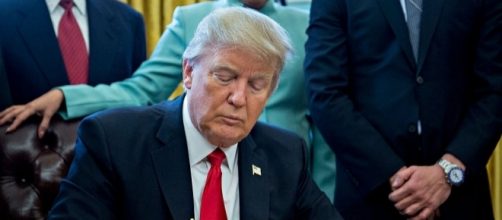On Monday afternoon, President Donald Trump accused the media of covering up multiple terrorist attacks, prompting the press to ask for actual examples. After the White House released their list, it was found to include repeated spelling errors and grammatical mistakes.
Trump's spelling blunder
While speaking at the United States Central Command in Florida on Monday, Donald Trump continued his attack on the news media, while also dragging the issue of Islamic terrorism into the equation. The commander in chief said that the media had ignored a long list of global attacks carried out by Islamic terrorists, stating "They have their reasons and you understand that." Hours later, the White House released a list of attacks in an attempt to back up their allegations, but it didn't go over as planned.
In addition to most of the attacks listed being widely reported at the time, spelling errors were found throughout the document, as reported by The Hill on February 6.
One attack listed was in reference to what took place in San Bernardino, California in December 2015, which was carried out by Islamic terrorists Syed Rizwan Farook and Tashfeen Malik. In addition to the report being a major news story at the time, contradicting Trump's claim, the city was misspelled on the list released by the administration. Instead, the White House referred to the city in question as "San Bernadino." Democratic Congressman Rep. Mark Takano was quick to point out the error, tweeting, "If the White House didn't know how to spell San Bernardino they should've read one of thousands of heartbreaking articles remembering victims."
NEW: WH releases list of terror attacks, inaccurately alleging "most" didn't receive media attention they deserved https://t.co/rhRQS88LO9 pic.twitter.com/gfuILfDyK6
— CBS News (@CBSNews) February 7, 2017
In addition to the San Bernardino blunder, the alleged "unreported" terror attack list was also filled with basic spelling errors.
The term "attacker" was misspelled multiple times, with the White House writing "attaker" and "attakers" in its place. Though many of the incidents on the list were covered by the medium, the administration did reference other terror attacks that didn't receive much mainstream attention, which took place in Bosnia, Bangladesh, and other foreign countries.
Trump doubles down
In the aftermath of his speech and release of the aforementioned list, Donald Trump returned to Twitter on Monday night to defend himself. "The threat from radical Islamic terrorism is very real," the former host of "The Apprentice" tweeted, while calling on the courts to uphold his "Muslim ban" executive order.

